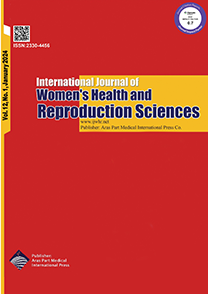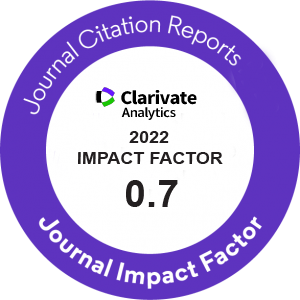| Original Article | |
| The Relationship Between the Incidence of Second and Third Trimester Hemoglobin and the Incidence of Preterm Birth and Birth Weight | |
| Nastaran Safavi Arbedili1, Nourossadat Kariman2 | |
| 1Department of Midwifery, Ardabil Branch, Islamic Azad University, Ardabil, Iran 2Department of Midwifery and Reproductive Health, Midwifery and Reproductive Health Research Center, School of Nursing and Midwifery, Shahid Beheshti University of Medical Sciences, Tehran, Iran |
|
|
DOI: 10.15296/ijwhr.2023.47 Viewed : 3392 times Downloaded : 2068 times. Keywords : Receiver operating characteristic surface, Second and third trimester hemoglobin, Preterm delivery, Low birth weight |
|
| Full Text(PDF) | Related Articles | |
| Abstract | |
Objectives: Changes in maternal hemoglobin during pregnancy affect preterm delivery and liver birth weight. The aim of this study was to investigate the relation between the second and third trimester hemoglobin levels and the incidence of live birth weight and preterm delivery. Methods: Six hundred patients at Milad hospital in 2011 were evaluated in this study. The second and third trimester hemoglobin levels were measured, in addition to investigating the relationship between the maternal hemoglobin level and the incidence rate of low birth weight and preterm delivery. Finally, the relation between the second and third trimester hemoglobin levels and education, job, history of abortion, and the use of calcium, folic acid, iron, and multivitamin pills was evaluated as well. Results: The results indicated that the second trimester maternal hemoglobin levels were high in patients with preterm delivery and low birth weight. The relative risk of preterm delivery in the second trimester of pregnancy was 1.89 times higher in the high hemoglobin group compared to the normal hemoglobin group (CI = 1.15-3.01), and it was 1.16 times higher in the third trimester. Based on the results, the relative risk of low birth weight in the high hemoglobin group was 2.7 times the normal one (CI = 1.15-5.01), and it was 1.03 higher in the third trimester. Conclusions: In general, high hemoglobin, especially in the second trimester, is associated with a higher risk of subsequent preterm delivery and low birth weight. Hence, it is recommended that women with high hemoglobin levels in their second trimester should be check up timely to reduce the undesirable effects of pregnancy. |
Cite By, Google Scholar
Online Submission System
 IJWHR ENDNOTE ® Style
IJWHR ENDNOTE ® Style
 Tutorials
Tutorials
 Publication Charge
Women's Reproductive Health Research Center
About Journal
Publication Charge
Women's Reproductive Health Research Center
About Journal
Aras Part Medical International Press Editor-in-Chief
Arash Khaki
Mertihan Kurdoglu Deputy Editor
Zafer Akan






















